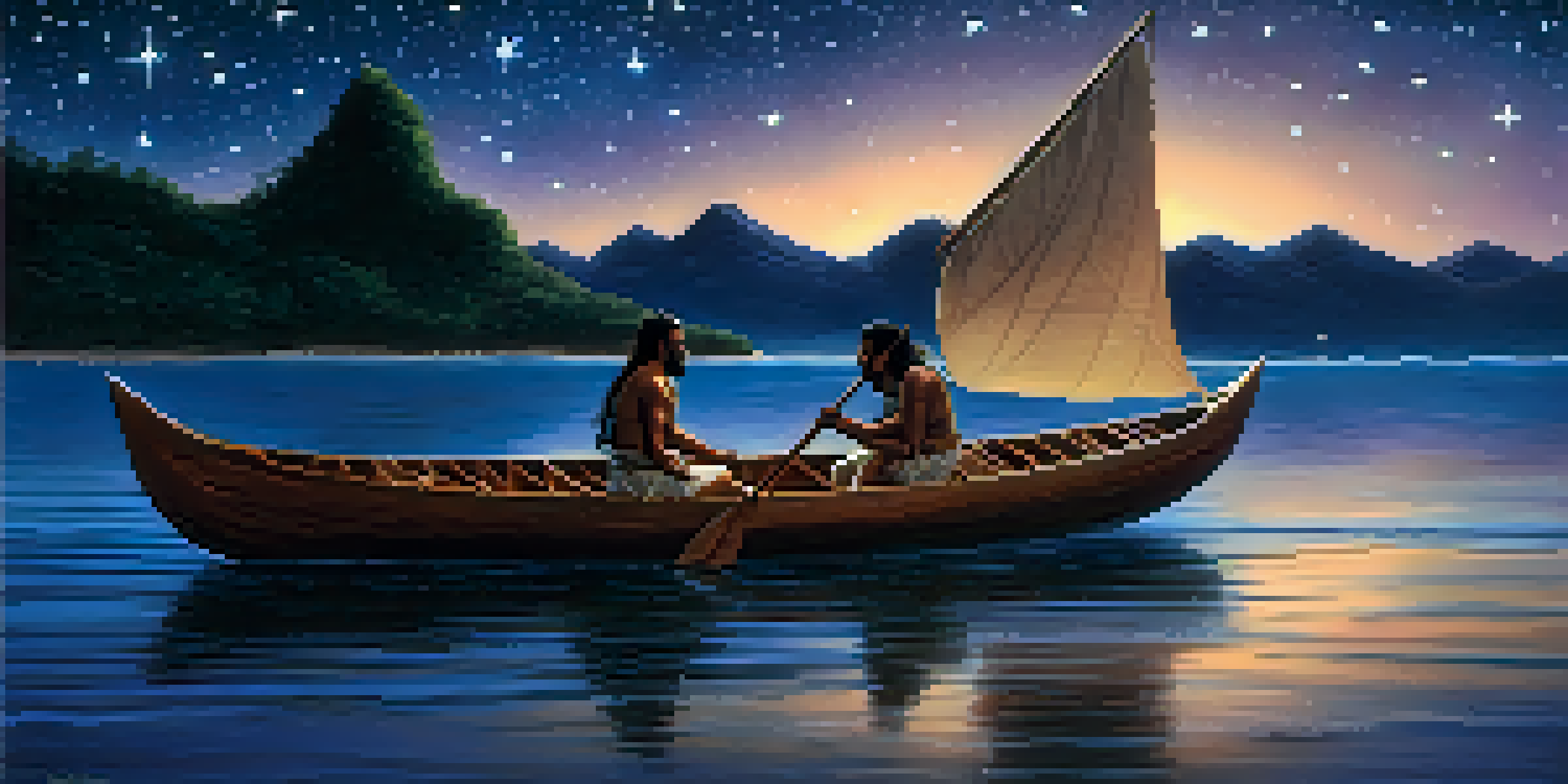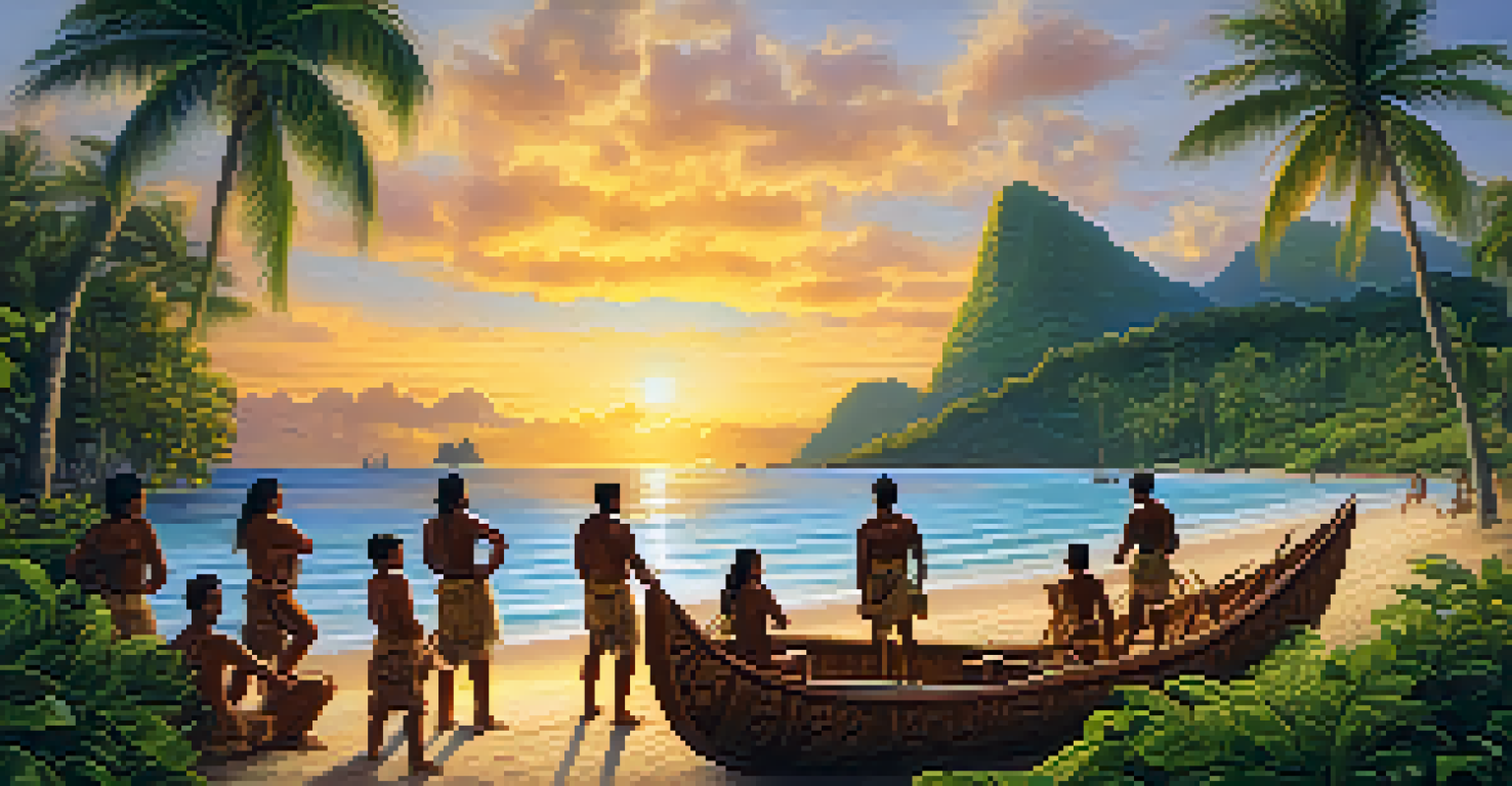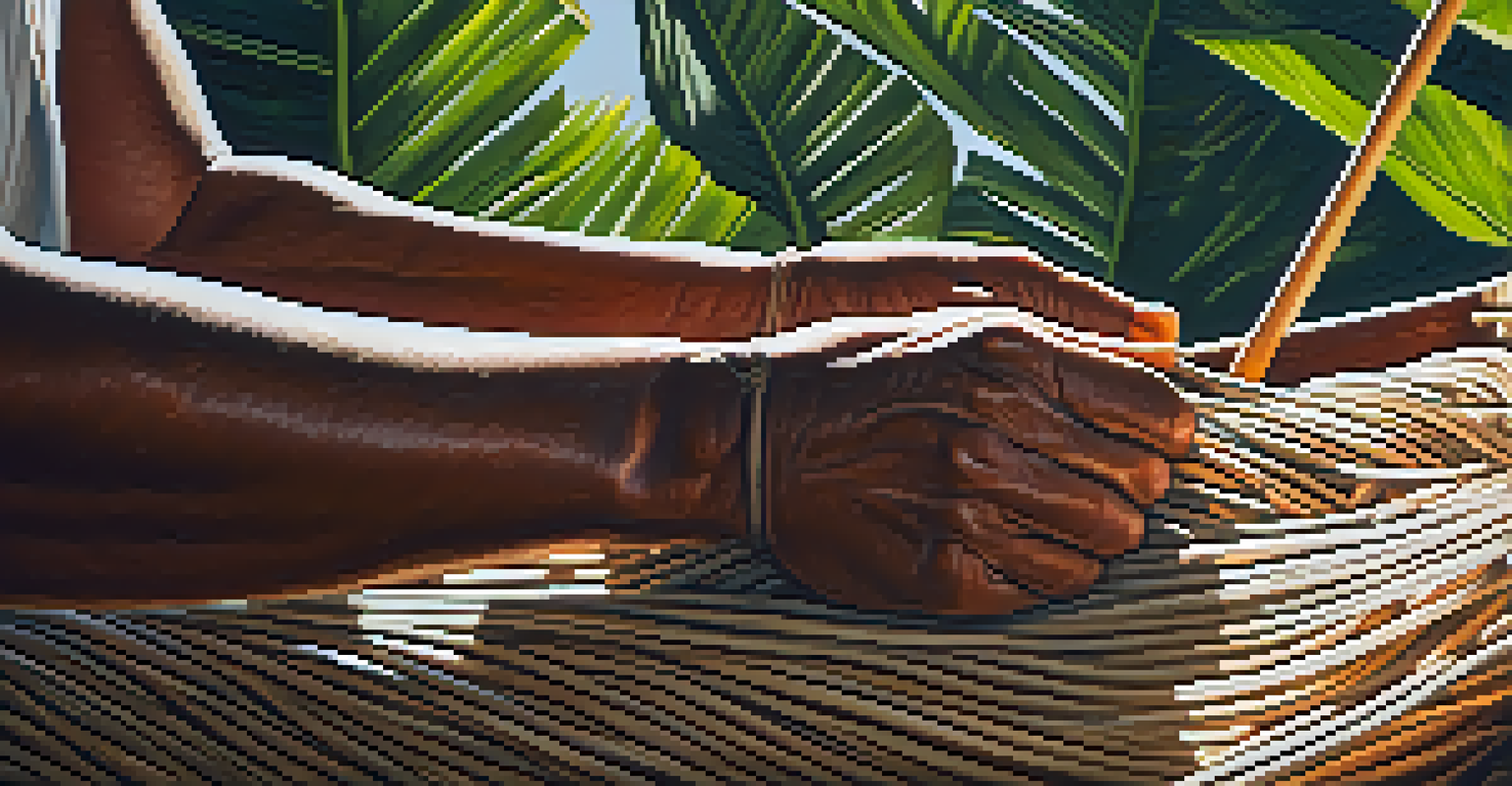The Voyages of Polynesian Navigators: Masters of the Ocean

Understanding the Polynesian Wayfinding Tradition
Polynesian wayfinding is a remarkable navigation technique that relies on natural elements. Unlike modern navigation, it doesn't use compasses or maps; instead, navigators observe the stars, ocean currents, and even the flight patterns of birds. This deep connection to nature allowed them to traverse vast distances across the Pacific Ocean with impressive accuracy.
The sea is a living entity, a source of life that we must respect and protect.
For instance, when sailing at night, navigators would pinpoint their position by referencing specific stars, while during the day, they would look for certain cloud formations that indicated land. This holistic approach to navigation exemplifies their profound understanding of their environment, turning the ocean into a familiar friend rather than an intimidating expanse.
The art of wayfinding is passed down through generations, often through oral traditions and hands-on training. This preservation of knowledge highlights the importance of community and shared experiences in Polynesian culture, as each navigator becomes a guardian of their ancestral maritime heritage.
The Significance of Double-Hulled Canoes
Central to Polynesian voyages are the double-hulled canoes, known as 'waka.' These impressive vessels are designed for stability and speed, allowing them to journey across the often turbulent waters of the Pacific. The design itself is a testament to Polynesian ingenuity, crafted to endure long voyages while carrying people, goods, and provisions.

A notable example is the 'Hokule'a,' a modern replica of traditional Polynesian canoes, which successfully navigated from Hawaii to Tahiti in 1976 using ancient methods. This journey not only showcased the effectiveness of double-hulled canoes but also reignited interest in traditional navigation techniques, inspiring a new generation of navigators.
Polynesian Navigation is Unique
Polynesian wayfinding relies on natural elements like stars and ocean currents, showcasing a deep connection to the environment.
The construction of these canoes is a communal effort, involving various skills from carving to weaving sails. This collaborative spirit reflects the values of Polynesian society, where teamwork and mutual support are essential for overcoming challenges, both at sea and on land.
Cultural Beliefs Influencing Navigation Practices
Polynesian navigators are not only skilled seafarers but also deeply spiritual individuals who incorporate cultural beliefs into their voyages. Many navigators believe that the ocean is alive, inhabited by ancestors and spirits who guide and protect them. This perspective fosters a strong sense of respect and responsibility towards the sea.
To be a navigator is to be a storyteller, weaving tales of the stars and the ocean into the fabric of our identity.
Before embarking on a journey, rituals and ceremonies are often performed to seek blessings from ancestors and the ocean itself. These practices serve to strengthen the bond between navigators and their environment, reinforcing the idea that their voyages are part of a larger narrative woven into the fabric of Polynesian identity.
The stories of gods and mythical figures are also integral to navigation, as they provide guidance and inspiration. By invoking these tales, navigators not only navigate physical waters but also traverse the spiritual realms, creating a profound connection between their journeys and their cultural heritage.
The Role of Oral History in Navigation
Oral history plays a crucial role in the preservation of Polynesian navigation techniques, with stories passed down through generations. These narratives often recount heroic voyages, challenges faced, and lessons learned, serving as both a teaching tool and a source of inspiration for aspiring navigators. The oral tradition is vibrant, engaging, and full of life.
By sharing these stories, older navigators impart not just knowledge but also values such as resilience, courage, and respect for nature. This storytelling culture reinforces community bonds and ensures that the wisdom of the past continues to inform future generations.
Canoes Reflect Cultural Ingenuity
Double-hulled canoes, essential for long voyages, exemplify Polynesian craftsmanship and the communal spirit of their society.
Moreover, oral history helps to keep the spirit of exploration alive in Polynesian culture. As each new voyage unfolds, it becomes part of an ongoing story, enriching the collective identity of the community and reminding everyone of their rich maritime legacy.
Navigating with the Stars: A Celestial Map
For Polynesian navigators, the night sky acts as a celestial map, guiding them on their journeys across the vast ocean. They identify various constellations and individual stars, each serving as a reference point for navigation. This ability to read the stars illustrates their deep understanding of astronomy long before modern tools existed.
One of the most important constellations is the Southern Cross, known as 'Hua' in some cultures. Navigators use it to determine direction, ensuring they remain on course even in the darkest nights. Such knowledge transforms the sky into a reliable compass, with each star representing a step towards familiar shores.
The connection to the stars is not just practical; it also carries cultural significance. Many celestial bodies are intertwined with myths and legends, adding layers of meaning to the navigation process. This blend of science and storytelling showcases the richness of Polynesian culture, where every journey is both a physical and spiritual adventure.
Polynesian Voyages: A Legacy of Exploration
The voyages of Polynesian navigators are nothing short of legendary, marking a significant chapter in the history of exploration. By settling on islands across the Pacific, such as Hawaii, Tahiti, and Easter Island, these navigators demonstrated remarkable resilience and adaptability. Their journeys not only expanded their horizons but also enriched the cultural tapestry of the region.
These explorers created thriving communities, each adapting their unique traditions and practices to their new environments. The resulting cultural exchange fostered innovations in agriculture, fishing techniques, and social structures, showcasing the navigators' ability to thrive in diverse settings.
Revival of Ancestral Practices
There is a growing interest in traditional navigation techniques, driven by a desire to reconnect with Polynesian heritage and preserve cultural identity.
Today, the spirit of their voyages lives on in modern Polynesian communities, where the legacy of exploration continues to inspire pride and identity. This ongoing connection to their ancestors reinforces the importance of preserving and celebrating their maritime heritage.
The Revival of Traditional Navigation Today
In recent years, there has been a resurgence of interest in traditional Polynesian navigation techniques. This revival is driven by a desire to reconnect with ancestral practices and preserve cultural identity in a rapidly changing world. Educational programs and workshops are being established, allowing younger generations to learn the art of wayfinding from seasoned navigators.
Organizations like the Polynesian Voyaging Society are leading the charge, promoting the importance of traditional navigation through voyages and educational initiatives. These efforts not only honor the past but also equip new navigators with the skills needed to navigate modern challenges, bridging the gap between tradition and contemporary life.

As more people embrace these ancient techniques, the voyages of Polynesian navigators serve as a reminder of humanity's intrinsic connection to the ocean. Their legacy inspires a sense of stewardship for our planet, encouraging everyone to respect and protect the natural world that sustains us.